Introduction
The lending industry is undergoing a significant transformation with the adoption of automated loan and mortgage solutions. These innovative systems leverage artificial intelligence and machine learning to streamline processes and enhance operational efficiency. From loan origination to borrower management, these solutions offer practical and empowering solutions to the challenges faced by the Director of Operations Efficiency.
By automating tasks such as data collection, document management, and payment processing, lenders can reduce manual errors, expedite loan processing, and improve customer experience. Furthermore, the integration of advanced analytics and seamless integrations with other systems empower lenders to make informed decisions, manage risks effectively, and stay competitive in a dynamic financial landscape. With the potential to automate up to 80% of financial operations, embracing these automated solutions is not just a technological upgrade but a strategic move towards inclusivity, efficiency, and a better customer experience in the lending process.
Understanding Loan Boarding and Origination
The lending initiation process is a crucial stage in lending, involving the thorough gathering and examination of borrower data to initiate a loan. This procedure, traditionally fraught with manual tasks like verifying personal details, collating financial documents, and assessing creditworthiness, is now being revolutionized by automated systems. These systems employ artificial intelligence and sophisticated algorithms to automate the data collection, validation, and analysis steps, ensuring an efficient and accurate handling of voluminous loan applications. This automation not only curtails manual errors but also expedites the entire origination process.
Cutting-edge companies like Moody’s Analytics and Numerated are leading the way, providing their expertise in risk management and technology to streamline operations. These industry leaders provide sophisticated tools that enhance customer experience and bolster the confidence of organizations across the globe. Numerated’s digital business lending solutions, for instance, have been instrumental in redefining the lending landscape, facilitating convenience for borrowers and efficiency for banks and credit unions alike.
Despite the perception that monetary departments are already automated, Shagun, an ex-Fortune 100 auditor and CEO of System, highlights a different reality. Citing a study by Accenture, Shagun points out that an astonishing 80% of financial operations could be automated. This transformation has the potential to release a substantial chunk of employee time from routine tasks, redirecting focus towards strategic initiatives and customer satisfaction.
The lending industry is currently addressing biases and intricacies within its operations. Augmented intelligence, which combines AI technology with human expertise, is a critical approach to enhance decision-making and improve inclusivity. By simplifying the intimidating procedures and documentation requirements, these technologies are edging the industry closer to fairness and efficiency.
Furthermore, workflow automation is gaining traction within businesses seeking to gain better visibility and control over their operations. Data indicates that a majority of companies are advancing their automation procedures, with more than half anticipating a ROI within one year of execution.
Essentially, the implementation of automated lending and mortgage systems is not only a technological enhancement but also a strategic shift towards inclusiveness, effectiveness, and an improved customer journey in the lending procedure.
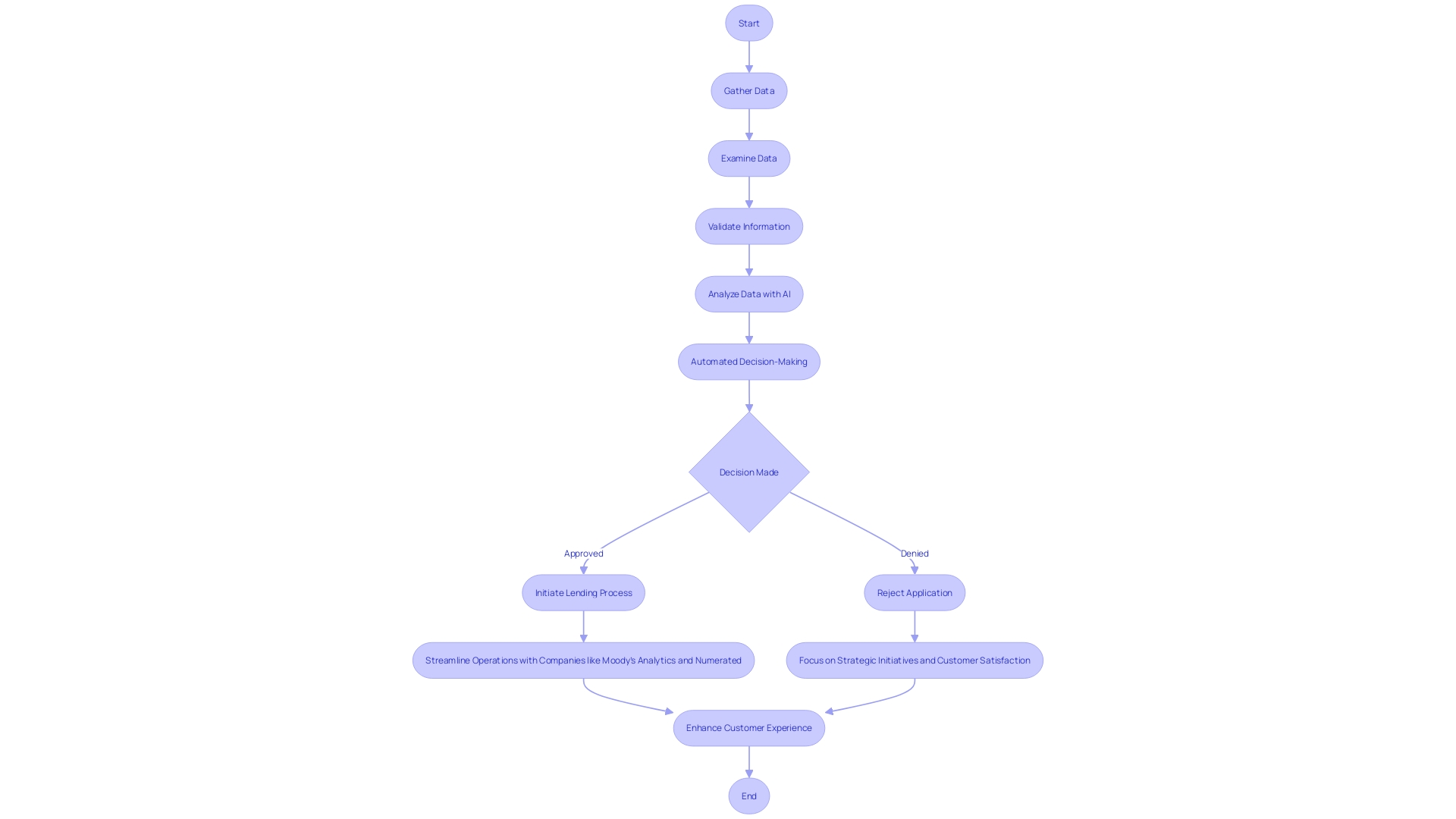
Document Management and Electronic Storage
The lending landscape has witnessed a remarkable transformation, reminiscent of the historical evolution of record management. From the meticulous papyrus scrolls of ancient Egyptians to the organized tabularia of the Romans, the preservation of documents has been crucial across eras. In modern times, the surge in document volumes has led organizations to seek the expertise of third-party archival services for secure record management, a trend yet to fully take root in markets like China.
As we delve into the realm of document automation, the narrative unfolds a technological metamorphosis. It began with the inception of word processors in the late 20th century, rudimentary yet groundbreaking in introducing digital document creation. The rise of personal computers further propelled the movement, with software such as Microsoft Word revolutionizing document editing and creation capabilities.
The 1990s and 2000s brought the advent of templates and macros, tools that enabled the creation of standardized documents and the automation of repetitive tasks. These innovations significantly minimized manual efforts and paved the way for enhanced operational workflows.
Document automation now stands as a pivotal tool in various industries, including legal, banking, and government sectors. It offers a plethora of functionalities such as Optical Character Recognition (OCR) for converting text images into machine-readable formats, data extraction for pinpointing relevant information, and document classification to organize documents efficiently. These capabilities, powered by artificial intelligence (AI), machine learning (ML), and natural language processing (NLP), are reshaping the way organizations manage their documents.
The impact of document automation is particularly evident in the case of Europris, Norway’s leading discount retail chain. By automating their central warehouse, they have not only consolidated their operations but have also set a precedent for future growth and efficiency.
Automated lending solutions are leading the way in this revolution in the lending process, providing secure document management and electronic storage. They allow for fast access and retrieval of documentations, significantly reducing delays and the risks associated with physical paperwork. As such, lenders can now enjoy an operational efficiency that mirrors the historical significance of meticulous record management, fueling a new era of precision and productivity in the lending industry.
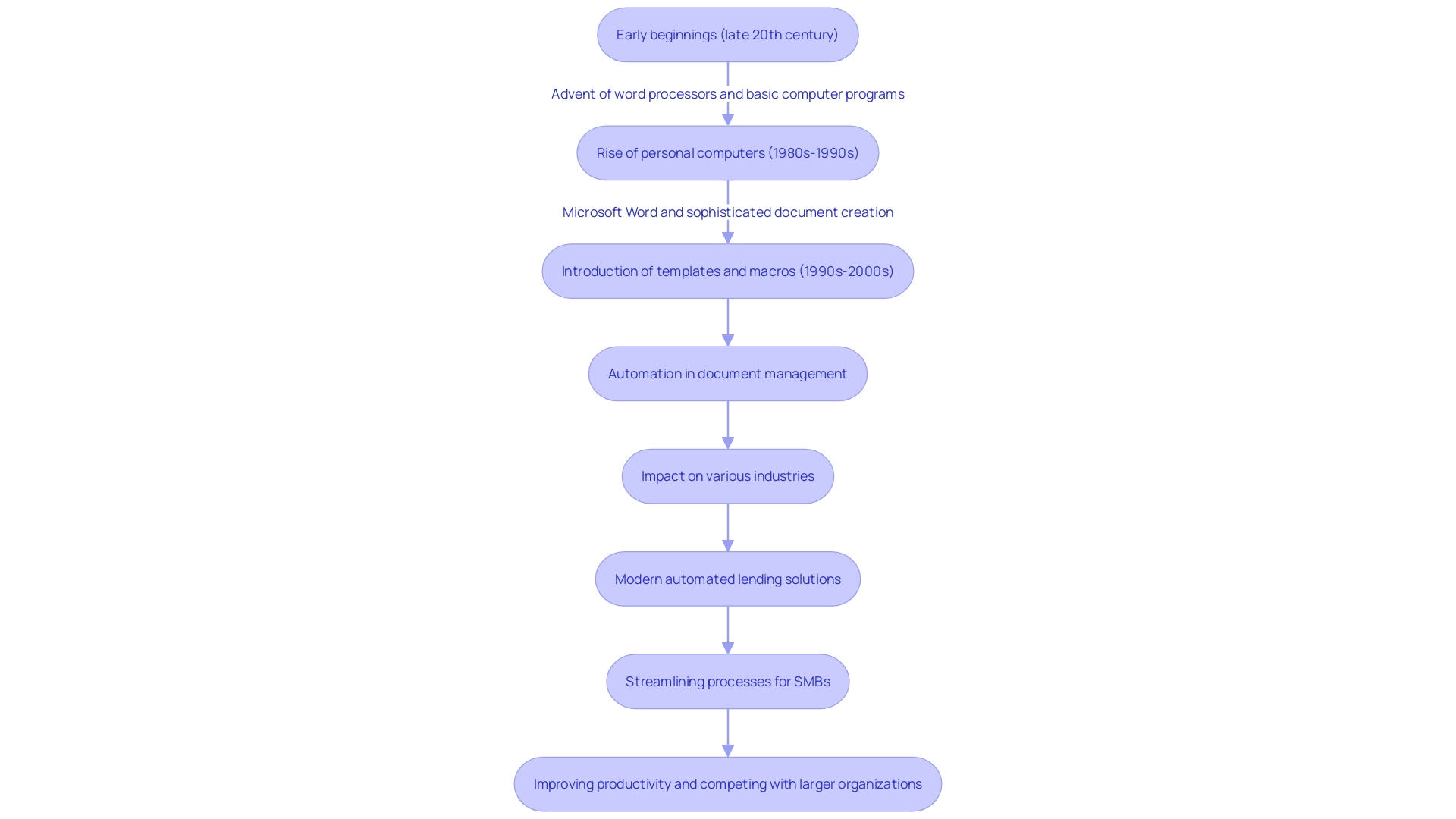
Automating the Handoff and Approval Process
In the core of the lending sector, the collaboration between underwriters, appraisers, and officers is crucial during the application review and approval stages. Traditionally inundated with manual processes, this phase has often been bogged down by inefficiencies, susceptibility to human error, and a glaring lack of transparency. However, the arrival of automated mortgage and lending options has completely transformed this field. These innovative systems are designed to automate the workflow, enabling stakeholders to collaborate effortlessly. Task assignments become automated, document sharing is facilitated with ease, and stakeholders are kept informed with real-time status updates of the processing stages.
Utilizing Intelligent Document Processing (IDP), these solutions harness artificial intelligence and machine learning to process and extract critical information from a myriad of documents—structured, semi-structured, or unstructured. This not only accelerates the decision-making cycles but also curtails the ongoing expenses tied to manual workflows. The result is a substantial uptick in productivity and responsiveness, empowering organizations to harness the power of data analytics for innovation.
Moreover, the automation of such systems transcends beyond mere efficiency. As exemplified by Dark Matter Technologies, the integration of cutting-edge AI technology in loan origination is setting a new industry standard, ensuring that monetary operations are not left behind in the automation revolution. Accenture has emphasized that around 80% of monetary operations can be automated, potentially freeing up a substantial portion of employee time to be redirected towards strategic initiatives and improving customer satisfaction.
Fundamentally, the modernization of the approval mechanism through automation is not only a privilege—it’s a strategic necessity for lending institutions aiming to improve their operations and remain competitive in a dynamic economic environment.
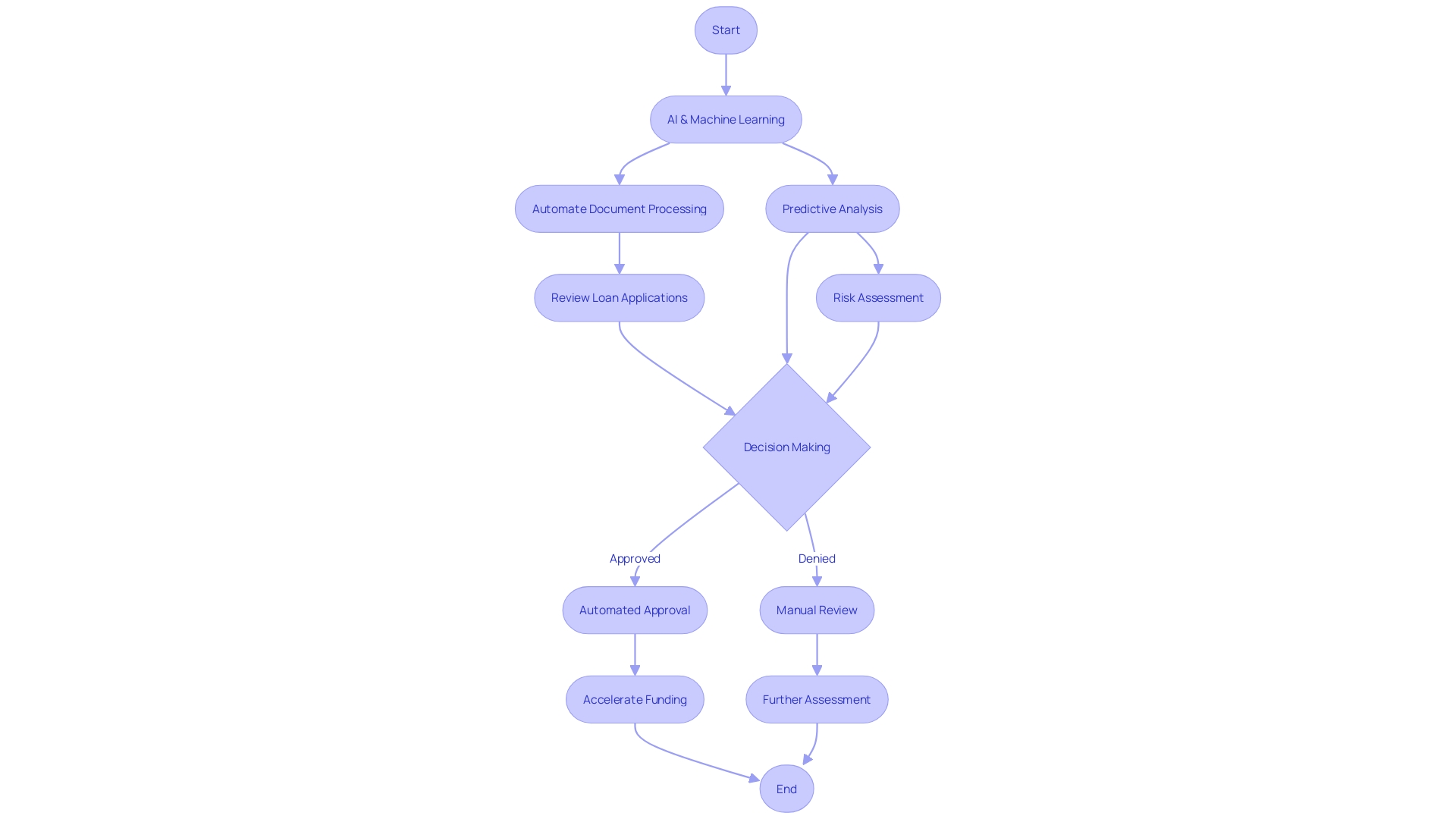
Borrower Management and Communication
Establishing enduring connections with clients and streamlining the lending process are vital elements in the industry. Automated mortgage and lending systems are changing the manner in which lenders engage with borrowers by providing centralized platforms that combine essential data such as contact information, previous borrowing experiences, and detailed communication records. These innovative systems facilitate consistent and personalized communication by utilizing templates for emails, setting up automatic reminders, and sending tailored notifications, which not only boosts engagement but also significantly cuts down the response time—a crucial factor that can make or break customer retention, as evidenced by Hiscox’s experience where rapid responses were linked to higher customer satisfaction and retention.
Moreover, the adoption of automation in financial operations, as highlighted by Shagun of SkyStem, presents an untapped potential to revolutionize the sector with an estimated 80% of financial tasks being automatable. This transition frees up valuable time for teams to concentrate on strategic initiatives and enhancing customer experiences. Artificial intelligence and machine learning are spearheading this change by offering actionable insights and identifying patterns and risks in consumer data that were previously overlooked, thus enabling more informed and agile credit decisions.
Borrowers too are empowered through these automated solutions; they’re provided with user-friendly online portals where they can effortlessly access loan details, make payments, and upload necessary documents. This reflects a shift towards a more self-sufficient and informed borrower experience, as noted by industry experts like Sandra Madigan, who emphasize the importance of a streamlined yet connected journey in the home buying process. The digital tools are designed to educate and provide a holistic view of homeownership costs, supporting borrowers in making better financial decisions.
In an era where a single negative customer service experience can deter potential business, it’s essential to recognize the impact of automation in maintaining high service standards. As Guilherme Batista from Hiscox points out, sustainable growth and operational efficiency are achievable goals through the integration of automation strategies, which not only enhance the customer experience but also alleviate the workload on service agents, setting a path for businesses to thrive without proportionally increasing operating expenses.
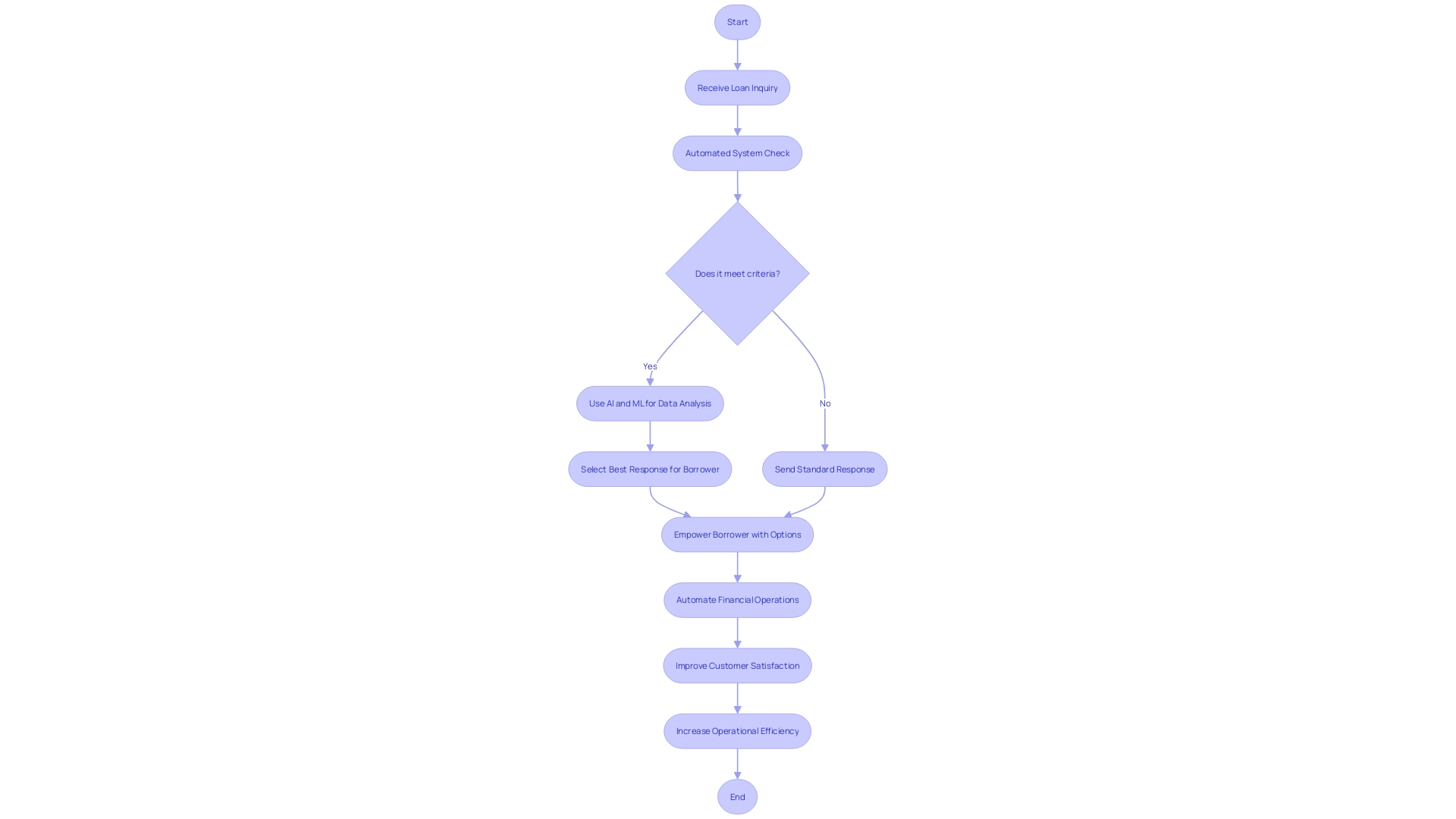
Performance and Risk Ratings through Analytics
Lenders today face the critical challenge of evaluating lending performance and managing risk with speed and accuracy. Traditional risk assessment methods, often hinged on manual analysis, are not only slow but also prone to errors. Modern automated loan systems, however, are transforming this landscape by utilizing the power of analytics and artificial intelligence. These advanced systems provide real-time insights by analyzing a multitude of data points such as credit scores, payment histories, and market trends, delivering precise risk assessments and predictive performance models.
One standout example is the nCino platform, which offers a cloud-based commercial banking offering that enhances customer engagement whilst driving efficiency, transparency, and compliance. Endorsements from industry leaders like the Global Head of the Corporate and Investment Bank underscore its ability to simplify workflows and bolster operational resilience. Similarly, Moody’s Analytics has been recognized for its comprehensive solutions that ensure customer confidence and meet organizational needs.
The transformative impact of artificial intelligence in the lending space is further evidenced by Numerated’s digital business lending platform. It utilizes data analytics for streamlined loan originations and underwriting, greatly expediting the lending procedure for financial institutions and their clients. Such technology not only accelerates operations but also offers a more personalized customer experience, as noted by MIT’s publication on machine learning’s role in enabling computers to learn and make informed decisions over time.
Furthermore, the integration of AI in various sectors, including UK public transport and the TSA’s facial recognition program in the US, indicates a growing trend in operational efficiency. Despite potential concerns around privacy and ethical implications, the successful application of AI in these areas hints at its vast potential in streamlining processes and managing risks effectively.
In the lending sector, adopting these cutting-edge automated systems results in making better-informed choices, decreasing the chances of nonpayment, and optimizing lending portfolios. With the added assurance of robust data privacy measures, lenders can confidently move towards a future where business growth and customer satisfaction are both achieved with remarkable efficiency.
Fee Automation and Invoicing
Automating loan and mortgage solutions transforms the traditionally labor-intensive tasks of fee management and invoicing. By utilizing technology, these platforms can effectively handle various fee structures such as origination fees, late fees, and prepayment penalties with accuracy and minimized risk of human error. This not only streamlines the lending process but also ensures timely and accurate billing, enhancing customer satisfaction—a critical factor given that half of customers may shy away from businesses that are slow to respond, as noted in Hiscox’s service model revamp. Furthermore, an automated system is capable of monitoring payment statuses, thus facilitating a more seamless monetary experience. As expressed by Shagun, CEO of System, while automation has become commonplace in consumer monetary transactions, its application within organizational finance departments remains restricted. Nevertheless, with 80% of financial operations ripe for automation according to Accenture, adopting AI and ML can profoundly free up resources for strategic initiatives. This shift is particularly pertinent in the face of a contracting European SME financing landscape, where automation can significantly bridge the widening funding gap for asset-light and cash conversion-challenged businesses.
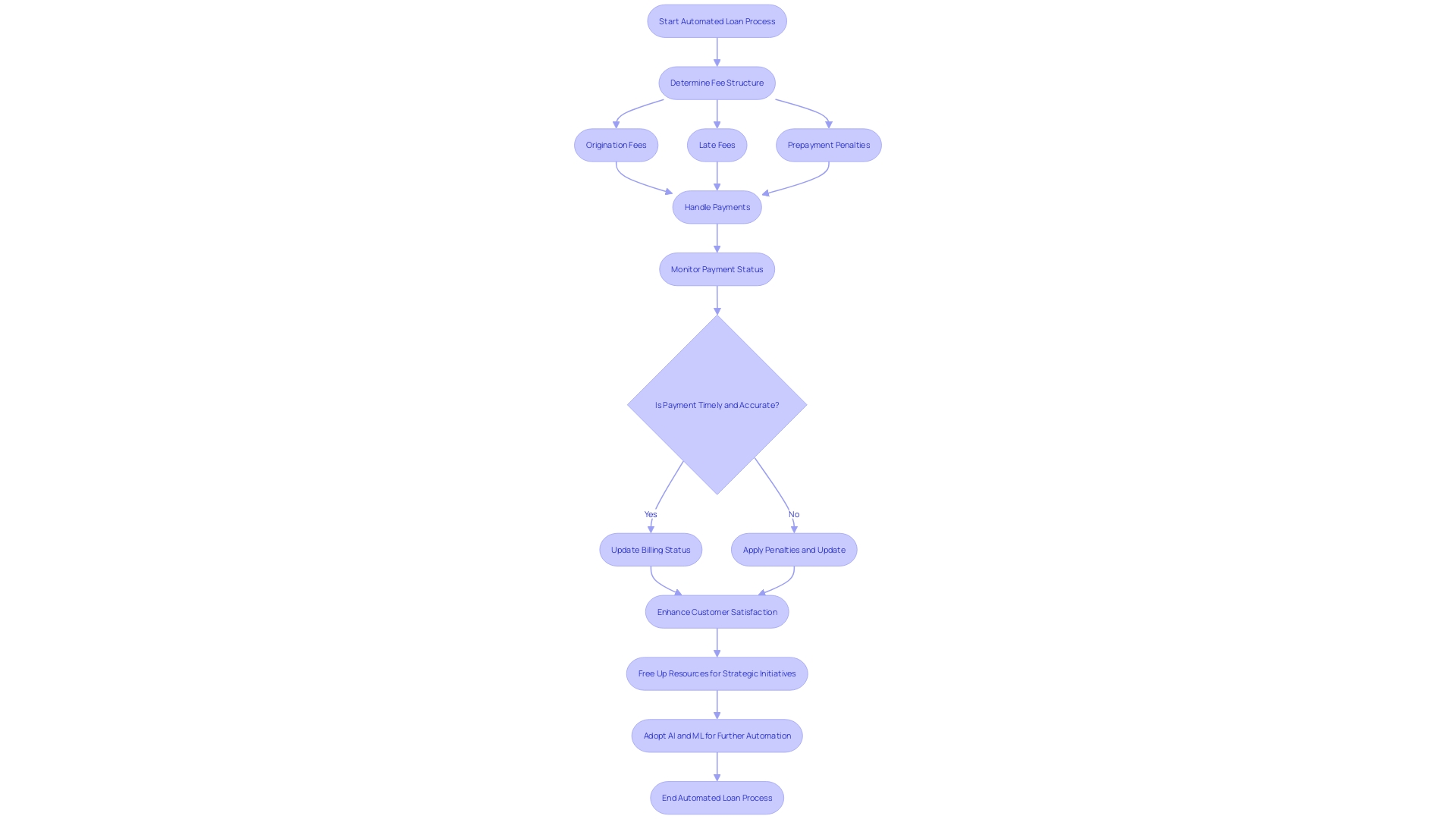
Payments and Waterfalls Management
Lending institutions face the intricate task of managing payments and navigating complex payment structures. Luckily, progress in automated loan and mortgage technology has revolutionized this landscape. These innovative systems provide a suite of tools that automate payment scheduling, escrow account maintenance, and intricate payment waterfalls, ensuring both accuracy and timeliness in payment processing.
By embracing Robotic Process Automation (RPA) technology, these solutions employ software bots that can perform a variety of tasksâfrom handling data to processing transactionsâacross different software platforms. This seamless integration across systems not only mitigates the risk of human error but also bolsters cash flow management.
Moreover, machine learning, a subset of artificial intelligence, enhances these automation platforms by enabling them to adapt and improve over time, providing tailored responses to borrower inquiries based on data analysis. The result is a heightened level of customer service that contributes to improved borrower satisfaction.
The effectiveness of automation in monetary operations is emphasized by a notable statistic from Accenture, unveiling that an astounding 80% of economic tasks hold the potential for automation. By capitalizing on this opportunity, lenders can redirect valuable employee time towards strategic initiatives and customer service excellence.
In the present economic situation, where consumer and corporate debt is increasingâas indicated by a national consumer debt reaching $17.29 trillion in the third quarter of 2023âautomated alternatives are more vital than ever. These systems not only streamline operations but also keep lending institutions competitive in a digital world where consumers expect personalized and technologically advanced interactions.
Seamless Integrations with Other Systems
As the industry of finance embraces the digital era, automated borrowing and mortgage solutions are becoming essential tools for lenders to maintain competitiveness and efficiency. These advanced systems, leveraging the latest in AI and machine learning, are revolutionizing how data is managed and processed. They provide smooth integration with essential third-party services such as credit bureaus and origination platforms, as well as financial management software. Such integrations are more than just a luxury; they are a strategic necessity, as evidenced by forward-thinking institutions like M&T Bank, which has recognized the importance of maintaining high-quality, streamlined code standards to ensure operational excellence.
The approach of centralized data management and the use of data orchestration create a more holistic customer profile by combining diverse data sources. This nonlinear analysis allows lenders to avoid rejecting potentially creditworthy applicants based on outdated or incomplete information. It’s an evolution from the traditional, linear data evaluation, which could create unnecessary barriers to loan approval. For example, Numerated’s platform leverages real-time data to improve the underwriting procedure for business lending, thus greatly enhancing efficiency from application to close.
The industry is also witnessing a shift towards Open APIs, allowing for more flexible, cost-effective integrations without the need for extensive customizations. This shift is anticipated to reduce the manual choke points that have historically slowed down the mortgage process. Dark Matter Technologies, along with other lenders, are pioneering a fresh approach by leveraging technology-driven innovations, with a specific emphasis on enhancing the experience of lending origination and establishing a higher benchmark for operational efficiency in the market.
These innovative approaches are not only streamlining operations but also enhancing the customer experience. By establishing a cohesive and effective processing ecosystem, lenders can minimize manual labor, enhance data accuracy, and deliver a quicker, more dependable service to their clients. While progressing, the incorporation of these automated methods in the lending procedure is not only about staying current with the times; it’s about establishing the foundation for the future of finance.
Benefits of Automated Loan Workflows
Optimizing the borrowing system through automated credit solutions is a game-changer for financial institutions. By leveraging technology to automate workflows, lenders can experience a substantial reduction in manual tasks. This shift not only speeds up the origination but also enhances operational efficiency to new heights. Moreover, the precision of automated systems diminishes the likelihood of human errors, fostering a more dependable decision-making process and mitigating risks associated with compliance.
The benefits extend to borrowers as well, who now enjoy a more seamless experience thanks to self-service options, diverse communication methods, and quicker loan approvals. On the flip side, lenders gain access to advanced analytics and insights, empowering them to make informed, data-driven decisions. Such abilities are vital for identifying trends and adjusting lending strategies to remain competitive in a market where, as per industry expert Shagun from SkyStem, an astounding 80% of operations can benefit from automation, including AI and ML technologies.
These advancements are not just theoretical. Real-world applications are manifest, as demonstrated by Delivery Hero’s approach to handling account recovery requests, which previously consumed 35 minutes per incident. By automating the process, the company saw a significant drop in both resolution time and the downtime employees faced when locked out of their accounts.
With the sector of money matters evolving and even big tech companies like Amazon and Apple inching their way into services related to money, traditional institutions must embrace automation to maintain their competitive edge and ensure compliance, as underscored by the FDIC’s recent actions against First Fed Bank. The incorporation of automated lending processes is, therefore, a strategic necessity for contemporary lenders seeking to excel in an ever-changing and regulated financial environment.
Implementation Steps for Loan Automation
To effectively execute automated lending alternatives, it’s crucial to commence with a thorough evaluation of your current procedures. Take a cue from industry leaders like M&T Bank, which, after 165 years of operation, has taken on the challenge of setting organization-wide Clean Code standards to enhance software maintainability and performance. Like them, evaluate your loan processes to pinpoint any inefficiencies or areas ripe for automation, and clearly articulate your objectives, such as increased efficiency or a better borrower experience.
When choosing the appropriate option, take into account the complete range of your organization’s requirements and ensure that the software not only corresponds to them but also complies with the highest security and regulatory standards. After all, the introduction of problematic software could lead to severe financial and reputational repercussions. Customization is essential; adapt the answer to suit your business model and ensure it integrates smoothly with your current systems.
Data integrity cannot be overstated during migration, and validation is crucial to prevent any inconsistencies that could affect operations or compliance. Training and managing change is also vital; employees need to understand how to leverage the new system effectively, which can be achieved by highlighting the benefits and providing robust support.
Before full deployment, pilot testing is essential to iron out any kinks and optimize the system based on user feedback. Once implemented, ongoing monitoring and evaluation will help you stay on top of performance and ensure your approach adapts to the evolving market. For example, with the rise of Proptech, the real estate sector is experiencing a transformation towards more transparent and efficient digital lending platforms, underlining the importance of staying current with industry trends.
Remember, Accenture’s research suggests a staggering 80% of financial operations could be automated, potentially revolutionizing efficiency and freeing up employees to focus on strategic initiatives. Embrace this potential and ensure your automated lending offerings contribute to a more dynamic, secure, and customer-centric lending environment.
Continuous Improvement in Loan Servicing Operations
Automated lending solutions are transforming the lending landscape, providing unprecedented efficiency gains and customer satisfaction improvements. For instance, consider M&T Bank, a long-standing institution with a history of innovation, which has embraced digital transformation to uphold rigorous security standards while meeting modern consumer expectations. Similarly, Hiscox’s adoption of automation reduced email response burdens by 28% and enhanced both customer and employee contentment, showcasing the operational benefits of such technologies.
The industry is shifting towards an all-digital customer journey, necessitating the rapid incorporation of new technologies. Companies such as Dark Matter Technologies are leading the way, offering tools for financial officers to better assess income and examine borrower documents. These advancements are crucial as they pave the way for more seamless origination processes and a competitive edge in the market.
Furthermore, resources like Floify’s ‘Drafting a Dream Team’ eBook, derived from insights of 150 top producers, offer guidance on leveraging technology to retain top talent and stay ahead of market cycles. And with over 60% of lenders concerned about market performance, an automated, tailored approach becomes even more vital for scaling businesses and supporting lending officers through market fluctuations.
As the lending industry evolves, it’s essential to recognize the transformative power of data. As noted by industry experts, consolidating vast data sources remains a challenge, yet it’s critical for developing a coherent end-to-end servicing strategy. Rocket Mortgage, a leader in the retail mortgage space, exemplifies this potential, having closed over $1.6 trillion in mortgage volume since its inception by consistently prioritizing a digital-first client experience.
In summary, embracing advanced automated loan solutions and ensuring clean, compliant code standards are not just operational enhancements—they’re essential strategies to thrive in the rapidly evolving, competitive mortgage landscape.
Conclusion
In conclusion, automated loan and mortgage solutions are transforming the lending industry. By leveraging artificial intelligence and machine learning, these systems streamline processes, reduce errors, expedite loan processing, and enhance customer experience. From loan origination to borrower management, these solutions offer practical and empowering solutions to the challenges faced by the Director of Operations Efficiency.
Automated loan solutions automate data collection, validation, and analysis, ensuring an efficient and accurate handling of loan applications. They provide secure document management and electronic storage, reducing delays and risks associated with physical paperwork. These solutions also automate the handoff and approval process, enabling effortless collaboration and accelerating decision-making cycles.
Borrower management and communication are enhanced through centralized platforms, facilitating personalized and timely interactions. Advanced analytics empower lenders to make informed decisions, manage risks effectively, and stay competitive in the financial landscape. These solutions bring numerous benefits, including reduced manual tasks, elevated operational efficiency, and a more dependable decision-making process.
Implementing automated loan solutions requires a critical assessment of existing processes, clear objectives, and selecting the right solution that aligns with security and regulatory standards. Customization, data integrity, training, and pilot testing are crucial steps in the implementation process. Continuous monitoring and evaluation ensure optimal performance and adaptability to market trends.
In summary, automated loan solutions revolutionize the lending industry by streamlining processes, improving efficiency, and enhancing customer experience. By embracing these solutions and implementing them effectively, lending institutions can thrive in a competitive financial landscape, providing a seamless and customer-centric lending experience.
Streamline your loan application process with automated loan solutions.

